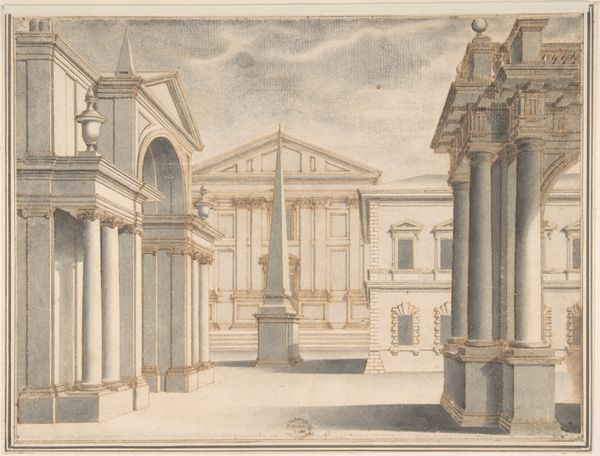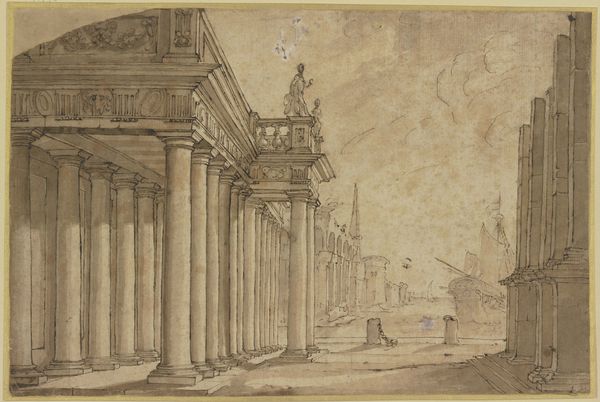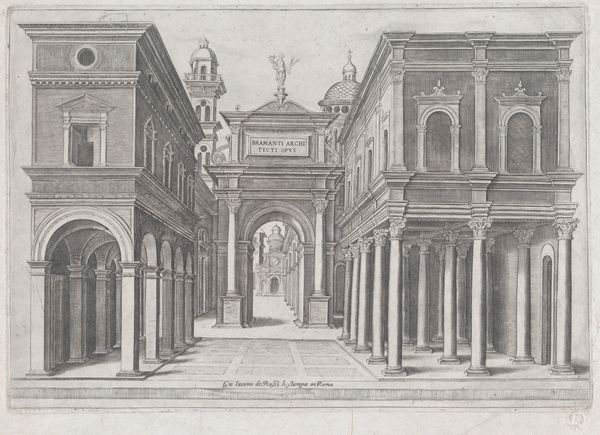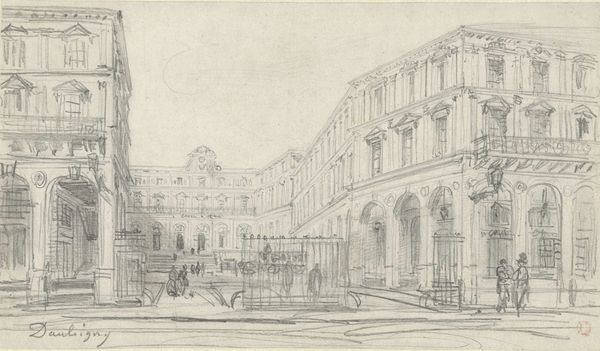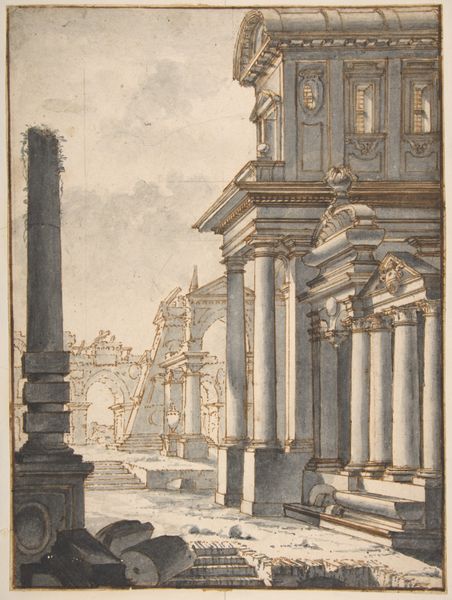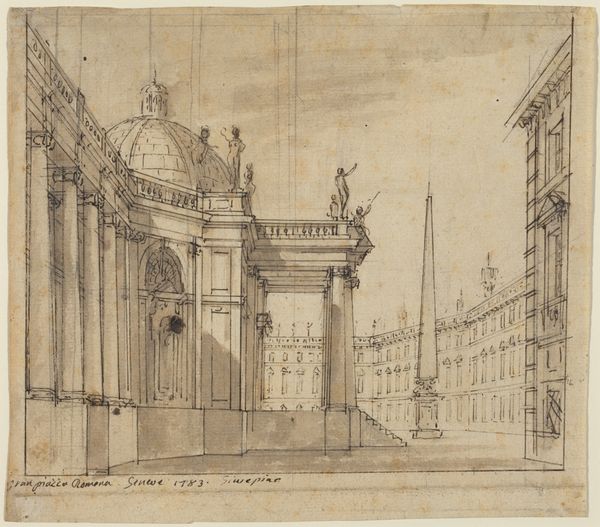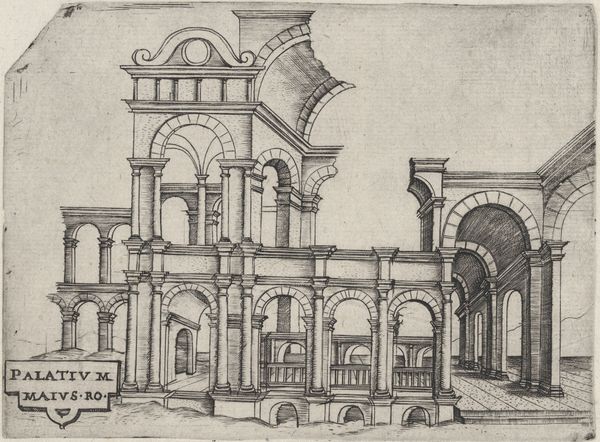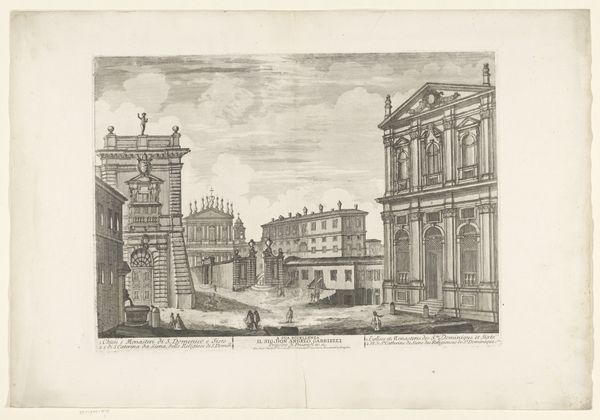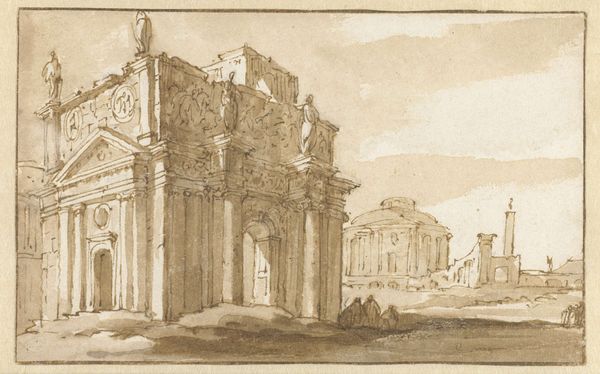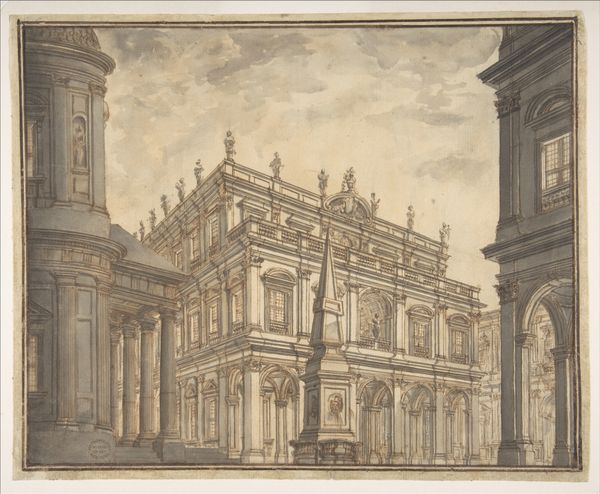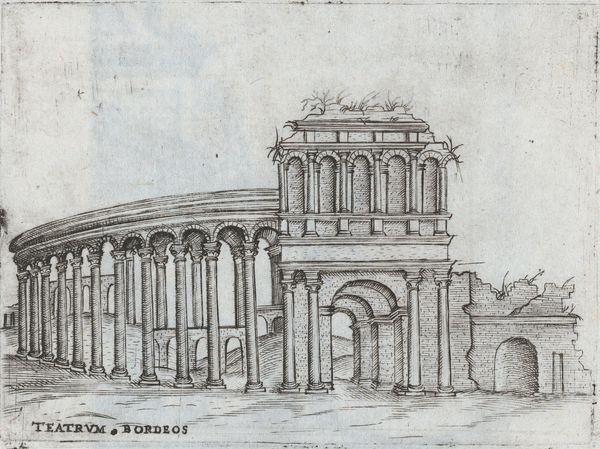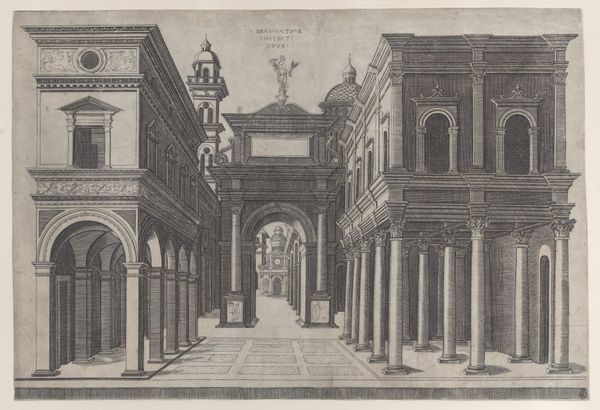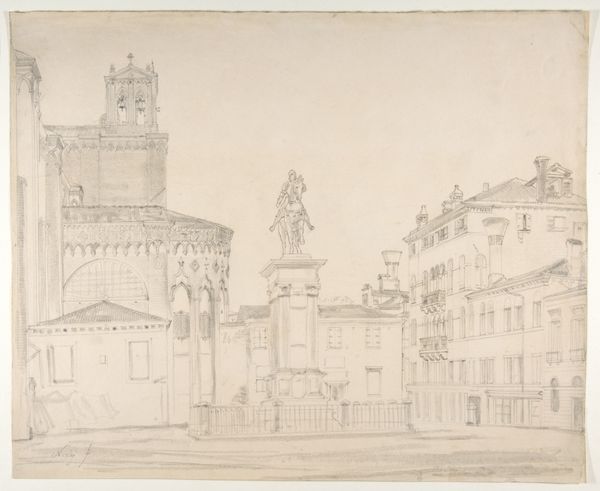
Piazza with an Equestrian Monument and a Palace c. 1810
0:00
0:00
drawing, pencil
#
drawing
#
neoclacissism
#
landscape
#
form
#
pencil
#
cityscape
Dimensions: overall: 22.5 x 29.9 cm (8 7/8 x 11 3/4 in.)
Copyright: National Gallery of Art: CC0 1.0
Curator: This drawing is "Piazza with an Equestrian Monument and a Palace," created around 1810 by Alessandro Sanquirico. Note the precise detail achieved using pencil. What are your initial thoughts? Editor: A hushed grandeur. The city seems frozen, expectant. Even the sky feels heavy, pregnant with meaning above the plaza. It makes me wonder about the history etched into those stones. Curator: The Neoclassical style emphasizes order, symmetry, and a return to classical forms. Observe how Sanquirico meticulously structures the composition with horizontal and vertical lines, using the architecture to create a sense of balanced harmony. Editor: The equestrian monument certainly dominates the scene. Equestrian statues often symbolize power and leadership; who do you think it represents, and what cultural values might be embedded in placing a rider above the populace? Curator: I think that, whether it represents a specific historical figure, the symbolic gesture is what speaks loudest here. Its formal arrangement emphasizes rationality. Even the wispy clouds punctuate, adding contrast and drawing attention to the clean, unwavering architectural design. Editor: Yet that sky…those looming clouds could represent a potential upheaval of that power, an implied challenge to the established order represented in the statues. Sanquirico creates an intriguing tension between idealized stability and hinted disruption. Curator: I concede your interpretation adds a layer of complexity to Sanquirico’s structural integrity. He gives the barest suggestion of life but emphasizes shapes and tone, the dark wash providing contrast. Editor: These kinds of plazas served as communal spaces, stages for civic ritual. Even the people look like shadows, part of a grand design in place, which in this drawing also gives space to question the meaning of a civilization so rooted in the old empires and kingdoms. Curator: Studying "Piazza with an Equestrian Monument and a Palace" gives insight into how form can both solidify and subtly question ideologies of its time. Editor: Ultimately, art invites dialogue; sometimes unsettling, always engaging, in revealing hidden dimensions behind established traditions and iconography.
Comments
No comments
Be the first to comment and join the conversation on the ultimate creative platform.
